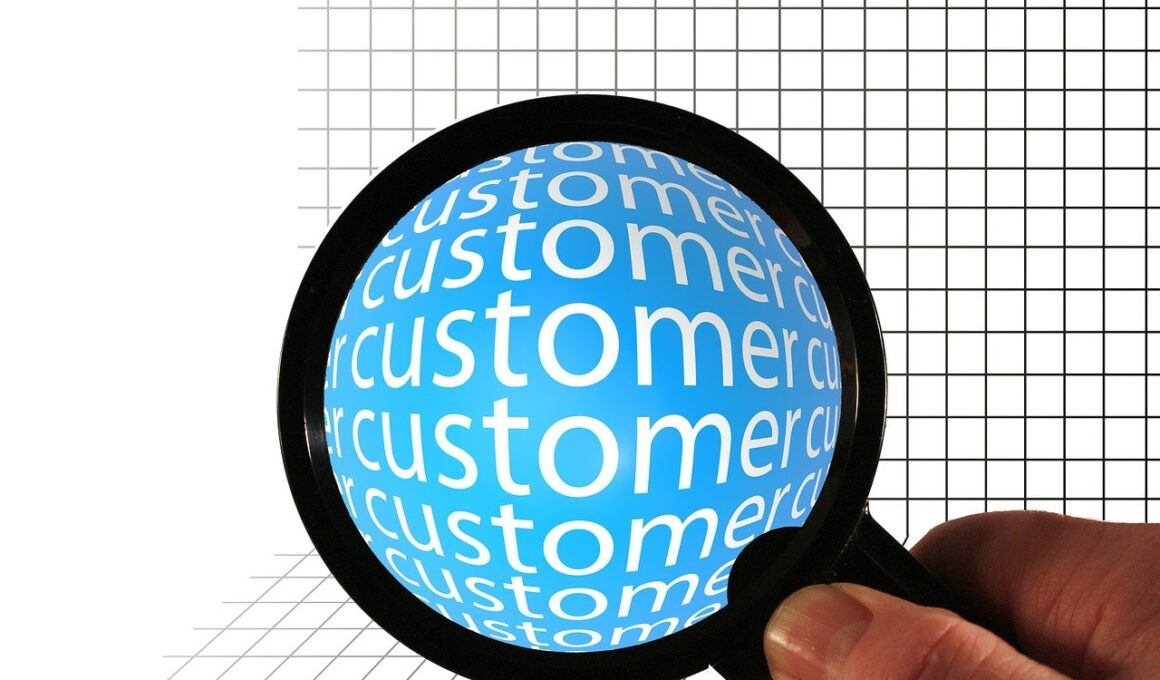Optimizing Subscription Plans to Maximize Customer Lifetime Value
To successfully enhance customer lifetime value (CLV) through subscription management, businesses must analyze various components of their subscription plans. A well-structured subscription plan can significantly increase customer retention and loyalty. Key factors to consider include pricing strategies, tiered offerings, and flexibility. Businesses should implement thorough market research to understand customer needs and preferences. This information will help craft tailored subscription options. Offering various plans will attract a wider audience by catering to differing needs. Furthermore, regular evaluation of these plans ensures they remain competitive and appealing. Businesses can utilize analytics tools to assess customer engagement and retention rates over time. Close attention to customer feedback can also indicate areas for improvement. Incorporating mechanisms such as advisory boards or feedback forms can offer direct insight into customer experiences. Once customer feedback is gathered, companies can iterate their subscription plans accordingly. This approach ensures a responsive and evolving subscription model that aligns with customer expectations, thereby increasing overall CLV. Continuous monitoring and adaptation will result in a more engaged customer base and higher retention rates.
To achieve optimum performance in subscription management, businesses must prioritize customer engagement strategies. Effective engagement keeps customers informed and invested in their subscription plans. Initiatives such as personalized communication, rewards programs, and proactive support are essential. Personalized communication includes targeted emails and tailored promotions that resonate with individual customer preferences. Implementing loyalty programs incentivizes continued patronage, as customers appreciate being recognized for their long-term commitment. Proactive customer support is also crucial; resolving issues quickly enhances customer satisfaction, boosting retention rates. Automated systems can help manage customer inquiries efficiently. Implementing a customer relationship management (CRM) tool can streamline communication processes. A CRM tool centralizes customer interactions and collects valuable data for analysis. Another strategy is to utilize social media platforms for engagement and to facilitate direct communication. This allows customers to feel heard and encourages community building. Businesses should also foster an online community where users can share experiences and tips regarding their subscriptions. Regularly hosting webinars or Q&A sessions can strengthen these connections and keep customers engaged. By implementing these strategies, companies can enhance customer relationships and increase the likelihood of long-term loyalty.
Analyzing Subscription Data for Improvement
To maximize CLV, businesses should engage in comprehensive analysis of subscription data. Analytics highlight trends, customer behavior, and areas needing improvement within subscription models. Data analysis can inform pricing strategies, reveal peak engagement times, and disclose customer churn triggers. Employing various analytic tools allows for deeper insights into the audience’s preferences, which in turn leads to more informed decisions. Segmenting data is a crucial step; businesses can explore different customer groups based on usage patterns, demographics, and payment behaviors. This allows for targeted marketing campaigns tailored specifically to each group’s preferences and needs. Identifying high-value customers through data can enable personalized marketing efforts aimed at increasing their lifetime value. Businesses should regularly review these insights and adjust their offerings accordingly. Adopting A/B testing further refines decisions, helping businesses assess which subscription features resonate best with customers. Continual testing and adaptation can ultimately enhance the overall user experience. With a thorough understanding of their customer base, businesses can more accurately predict future trends and adapt products to meet evolving client needs. Ultimately, data-driven decisions will enhance customer value over time.
Pricing strategies play a pivotal role in the success of subscription plans, influencing customer decisions significantly. To maximize CLV, businesses should explore various pricing structures, including tiered pricing or dynamic pricing models. Tiered pricing offers different levels of service, enabling customers to choose the most suitable option for their usage. This variety can enhance customer satisfaction and investment in the service, as customers feel more in control of their purchases. On the other hand, dynamic pricing allows for adjusting rates based on demand, competitor pricing, or customer loyalty. This approach can ensure that prices remain appealing while reflecting value appropriately. Implementing discounts for annual subscriptions can also drive customers towards longer commitments, thereby increasing lifetime value. Furthermore, transparency in pricing engenders trust, as customers appreciate clarity in fee structures. Clear communication about what is included in each tier builds expectations and promotes satisfaction. Companies should review competitors’ pricing strategies and analyze industry standards regularly. This intelligence allows businesses to stay competitive and potentially attract new clients. Balancing profitability and customer satisfaction is crucial to a successful pricing strategy.
Implementing Upselling and Cross-Selling Techniques
Integrating upselling and cross-selling techniques within subscription models can serve to enhance customer lifetime value. By introducing complementary products or higher-tier subscriptions, companies can increase customer spending effectively. Customers often appreciate recommendations tailored to their needs; thus, these techniques should focus on enhancing the user experience. For example, if a customer subscribes to a basic plan, presenting premium features can entice them to upgrade. Conversely, offering related products or add-ons at checkout can enhance perceived value. Installing recommendation algorithms based on past purchases or preferences ensures that suggestions are relevant and appealing. Regularly communicating these options through email marketing or in-app notifications keeps customers informed about available upgrades. Additionally, showcasing testimonials and case studies from satisfied users can increase the likelihood of conversion. Engaging content that educates customers about the benefits of premium plans or add-ons can also aid in convincing them to choose these options. Training the sales team to recognize potential upselling opportunities during customer interactions further enhances this strategy. Thus, through thoughtful implementation of upselling and cross-selling, businesses can unlock significant revenue streams while satisfying customers.
Customer feedback is crucial when optimizing subscription plans for enhanced lifetime value. Actively soliciting feedback helps businesses stay aligned with customer expectations and preferences. Utilizing surveys, focus groups, or direct interviews allows customers to voice their opinions on various aspects of subscriptions. This gathered feedback uncovers strengths and weaknesses within offerings. Businesses should analyze this information to identify trends or common concerns. Addressing these issues swiftly conveys to customers that their opinions matter, thus strengthening trust and loyalty. Moreover, implementing a robust feedback loop ensures that improvements are communicated back to customers, showcasing responsiveness. Regularly updating customers on changes made based on their suggestions enhances engagement and satisfaction. Data analysis can also correlate specific feedback with customer retention rates and satisfaction scores. Understanding which features resonate best can guide future product development. Prominent companies in subscription-based industries consistently prioritize customer input, leading to better alignment with client preferences. Encouraging an open dialogue ensures customers feel part of the process; this community-building aspect enhances overall loyalty. Ultimately, integrating feedback into subscription optimization fosters a customer-centric approach that bolsters lifetime value.
Conclusion: The Importance of Continuous Improvement
In the dynamic landscape of subscription management, optimizing plans is a continuous endeavor essential for maximizing customer lifetime value. As customer preferences and market conditions evolve, businesses must remain agile and responsive to these changes. Regularly reviewing and adjusting subscription offerings ensures they remain attractive and relevant. By analyzing customer data, gathering feedback, and implementing effective engagement strategies, the long-term success of subscription programs can be secured. Emphasizing personalization, transparency, and customer involvement in shaping offerings fosters loyalty and satisfaction. Additionally, by effectively leveraging upselling and cross-selling techniques, companies can increase overall revenue. In parallel, optimizing pricing strategies will contribute to sustained growth and profitability. It is equally important to ensure that each communication regarding changes or enhancements in subscription offerings is clear and well-conveyed. As competition intensifies, those companies that prioritize the customer experience and investment in optimization will gain a significant advantage. Highlighting the value of subscriptions and adapting based on real-time insights will help build strong customer relationships. Remember that, in subscription management, continuous improvement is vital; entrepreneurial success is achieved through dedication to understanding customer needs.
Businesses must adopt a comprehensive approach to optimize subscription plans for maximizing customer lifetime value. Integrating all discussed strategies into a cohesive plan ensures efficient subscription management that evolves with market dynamics. Establishing strong communication channels with customers and engaging them meaningfully is critical to fostering loyalty. By prioritizing customer satisfaction, good relationships built on trust and reliability can emerge, enhancing long-term value and retention. Constructing a clear roadmap for tracking goals and measuring outcomes helps businesses recognize their effectiveness in subscriber engagement and retention. Employing technology and tools to automate and optimize these processes makes scaling and adapting to changes easier as they arise. Furthermore, creating a culture of continuous improvement within the organization can encourage innovation and proactive problem-solving. Insights gained from customer interactions should be at the center of any subscription optimization efforts. A concerted focus on these aspects will lead to creating a subscription ecosystem that benefits both customers and businesses. The key takeaway is the commitment to providing exceptional customer experiences, alongside tailored subscription offerings that meet evolving expectations. Hence, enthusiastic engagement in subscription management translates to enhanced customer lifetime value.


